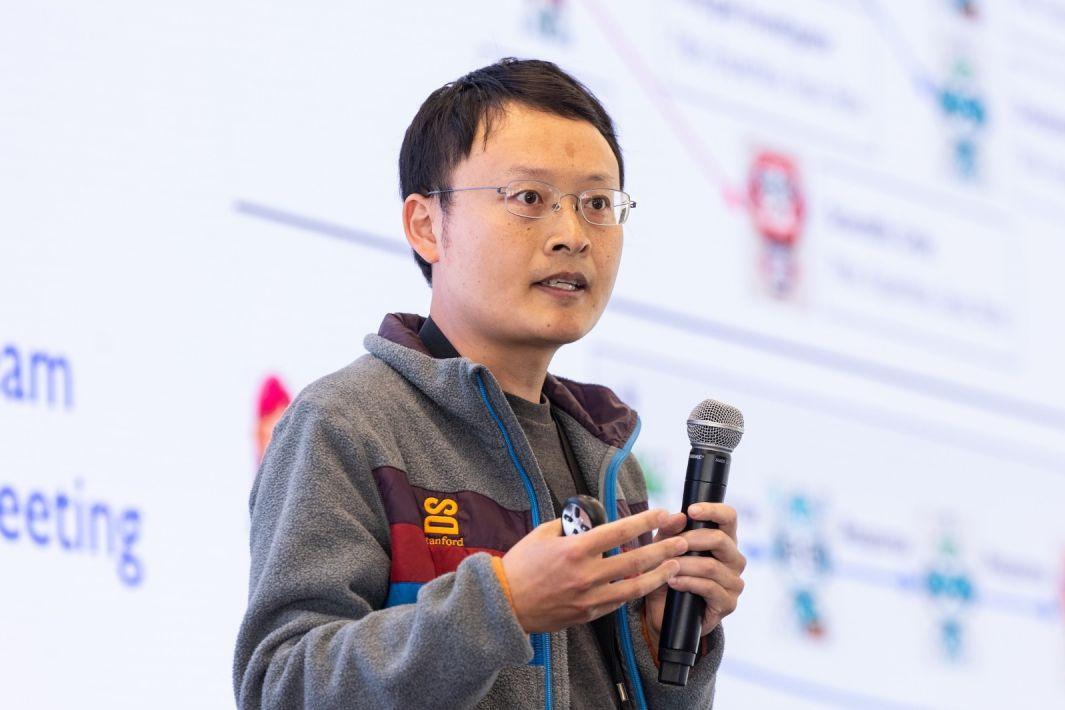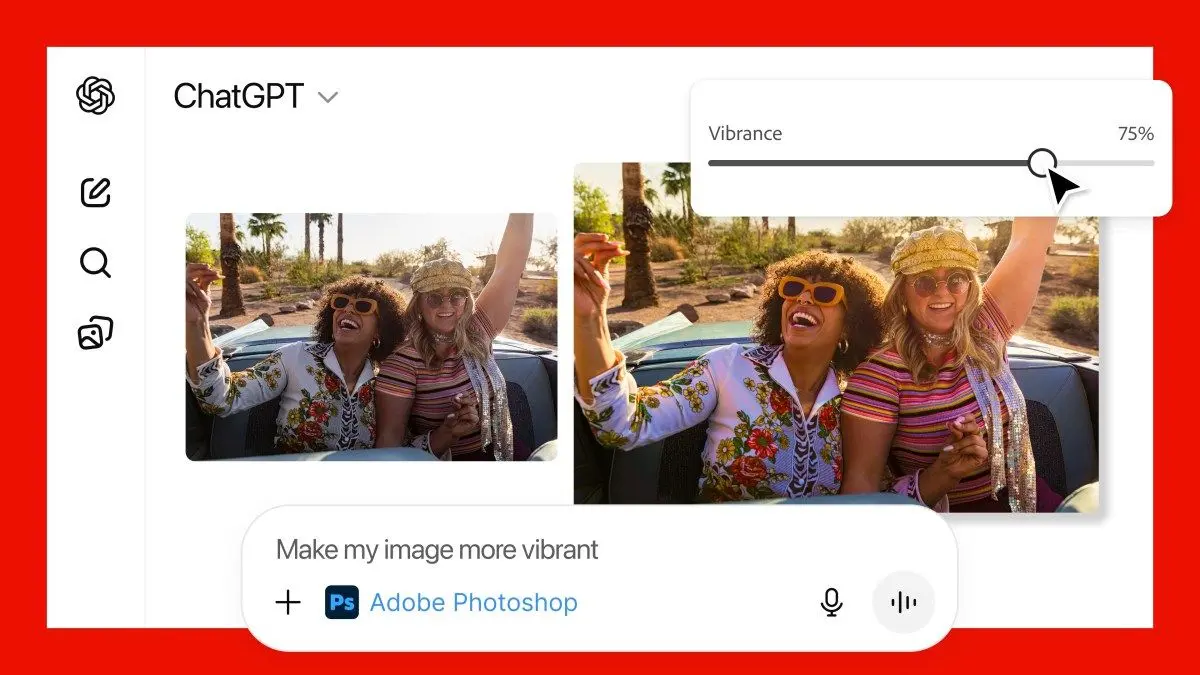Scientists Propose Global Initiative to Create AI-Powered Virtual Human Cell
2 Sources
2 Sources
[1]
Scientists call for all-out, global effort to create an AI virtual cell
Noting that recent advances in artificial intelligence and the existence of large-scale experimental data about human biology have reached a critical mass, a team of researchers from Stanford University, Genentech, and the Chan-Zuckerberg Initiative says that science has an "unprecedented opportunity" to use artificial intelligence (AI) to create the world's first virtual human cell. Such a cell would be able to represent and simulate the precise behavior of human biomolecules, cells, and, eventually, tissues and organs. "Modeling human cells can be considered the holy grail of biology," said Emma Lundberg, associate professor of bioengineering and of pathology in the schools of Engineering and Medicine at Stanford and a senior author of a new article in the journal Cell proposing a concerted, global effort to create the world's first AI virtual cell. "AI offers the ability to learn directly from data and to move beyond assumptions and hunches to discover the emergent properties of complex biological systems." Lundberg's fellow senior authors include two Stanford colleagues, Stephen Quake, a professor of bioengineering and science director at the Chan-Zuckerberg Initiative, and Jure Leskovec, a professor of computer science in the School of Engineering, as well as Theofanis Karaletsos, head of artificial intelligence for science at the Chan Zuckerberg Initiative, and Aviv Regev executive vice president of research at Genentech. Remarkable promise Such a synthetic cell model would both allow a deeper understanding of the complex interplay of chemical, electrical, mechanical, and other forces and processes that make healthy human cells work, and also reveal the root causes of disease that lead to cell dysfunction or death. Perhaps more intriguingly, an AI virtual cell would also allow scientists to experiment in silico instead of in vivo -- on a computer rather than on living cells and organisms. This ability would expand human understanding of human biology and speed the search for new therapies, pharmaceuticals, and perhaps cures to disease. Cancer biologists might model how certain mutations turn healthy cells malignant. Microbiologists might someday predict the effects of viruses on infected cells and perhaps even host organisms. Physicians might one day test treatments on "digital twins" of their patients, accelerating a long-promised age of faster, more cost-effective, and safer personalized medicine. To be considered a success, however, the authors say an AI virtual cell would need to accomplish three outcomes. First, it would need to empower researchers to create universal representations across species and cell types. It would also have to accurately predict cellular function, behavior, and dynamics and comprehend cellular mechanisms. And, last but not least, an AI virtual cell would allow experiments on computers to test hypotheses and guide data collection to expand the virtual cell's abilities at speed and at costs far below those of today. Global collaboration In what the authors call a "trifecta" for science, AI has ushered in an era of tools that are predictive, generative, and query-able, and yet the massive scale of raw biological data that will be needed to create the virtual cell is undeniable. By comparison, the authors point to the storehouse of DNA sequencing data compiled by the National Institutes of Health called the Short Read Archive which now contains more than 14 petabytes of data -- a thousand times larger than the dataset used to train ChatGPT. Achieving the AI virtual cell will not be easy. It will require a concerted, global, open-science collaboration on an unprecedented scale across fields ranging from genetics and proteomics to medical imaging, and a close partnership among global stakeholders in academia, industry, and non-profits. At the same time, the authors are careful to note that any work toward the AI virtual cell should only be undertaken with the assumption that resulting models will be made available to the entire scientific community without restriction. "This is a mammoth project, comparable to the genome project, requiring collaboration across disciplines, industries, and nations, and we understand that fully functional models might not be available for a decade or more," Lundberg asserted. "But, with today's rapidly expanding AI capabilities and our massive and growing datasets, the time is ripe for science to unite and begin the work of revolutionizing the way we understand and model biology."
[2]
Scientists call for all-out, global effort to create an AI virtual cell
Noting that recent advances in artificial intelligence and the existence of large-scale experimental data about human biology have reached a critical mass, a team of researchers from Stanford University, Genentech, and the Chan-Zuckerberg Initiative says that science has an "unprecedented opportunity" to use artificial intelligence (AI) to create the world's first virtual human cell. Such a cell would be able to represent and simulate the precise behavior of human biomolecules, cells, and, eventually, tissues and organs. "Modeling human cells can be considered the holy grail of biology," said Emma Lundberg, associate professor of bioengineering and of pathology in the schools of Engineering and Medicine at Stanford and a senior author of a new article in the journal Cell proposing a concerted, global effort to create the world's first AI virtual cell. "AI offers the ability to learn directly from data and to move beyond assumptions and hunches to discover the emergent properties of complex biological systems." Lundberg's fellow senior authors include two Stanford colleagues, Stephen Quake, a professor of bioengineering and science director at the Chan-Zuckerberg Initiative, and Jure Leskovec, a professor of computer science in the School of Engineering, as well as Theofanis Karaletsos, head of artificial intelligence for science at the Chan Zuckerberg Initiative, and Aviv Regev executive vice president of research at Genentech. Such a synthetic cell model would both allow a deeper understanding of the complex interplay of chemical, electrical, mechanical, and other forces and processes that make healthy human cells work, and also reveal the root causes of disease that lead to cell dysfunction or death. Perhaps more intriguingly, an AI virtual cell would also allow scientists to experiment in silico instead of in vivo - on a computer rather than on living cells and organisms. This ability would expand human understanding of human biology and speed the search for new therapies, pharmaceuticals, and perhaps cures to disease. Cancer biologists might model how certain mutations turn healthy cells malignant. Microbiologists might someday predict the effects of viruses on infected cells and perhaps even host organisms. Physicians might one day test treatments on "digital twins" of their patients, accelerating a long-promised age of faster, more cost-effective, and safer personalized medicine. To be considered a success, however, the authors say an AI virtual cell would need to accomplish three outcomes. First, it would need to empower researchers to create universal representations across species and cell types. It would also have to accurately predict cellular function, behavior, and dynamics and comprehend cellular mechanisms. And, last but not least, an AI virtual cell would allow experiments on computers to test hypotheses and guide data collection to expand the virtual cell's abilities at speed and at costs far below those of today. In what the authors call a "trifecta" for science, AI has ushered in an era of tools that are predictive, generative, and query-able, and yet the massive scale of raw biological data that will be needed to create the virtual cell is undeniable. By comparison, the authors point to the storehouse of DNA sequencing data compiled by the National Institutes of Health called the Short Read Archive which now contains more than 14 petabytes of data - a thousand times larger than the dataset used to train ChatGPT. Achieving the AI virtual cell will not be easy. It will require a concerted, global, open-science collaboration on an unprecedented scale across fields ranging from genetics and proteomics to medical imaging, and a close partnership among global stakeholders in academia, industry, and non-profits. At the same time, the authors are careful to note that any work toward the AI virtual cell should only be undertaken with the assumption that resulting models will be made available to the entire scientific community without restriction. "This is a mammoth project, comparable to the genome project, requiring collaboration across disciplines, industries, and nations, and we understand that fully functional models might not be available for a decade or more," Lundberg asserted. "But, with today's rapidly expanding AI capabilities and our massive and growing datasets, the time is ripe for science to unite and begin the work of revolutionizing the way we understand and model biology."
Share
Share
Copy Link
Researchers from Stanford University, Genentech, and the Chan-Zuckerberg Initiative call for a worldwide effort to develop an AI-driven virtual human cell, aiming to revolutionize biological understanding and accelerate medical research.

Scientists Propose Ambitious AI-Driven Virtual Cell Project
In a groundbreaking proposal published in the journal Cell, a team of researchers from Stanford University, Genentech, and the Chan-Zuckerberg Initiative have called for a global effort to create the world's first AI-powered virtual human cell. This initiative aims to leverage recent advancements in artificial intelligence and the vast amount of available biological data to revolutionize our understanding of human biology
1
2
.The Vision of an AI Virtual Cell
The proposed AI virtual cell would be capable of simulating the precise behavior of human biomolecules, cells, and potentially even tissues and organs. Emma Lundberg, associate professor at Stanford and a senior author of the article, describes this endeavor as the "holy grail of biology," emphasizing AI's ability to learn directly from data and uncover emergent properties of complex biological systems
1
.Potential Applications and Benefits
The creation of such a synthetic cell model could have far-reaching implications for various fields:
-
Disease Understanding: It would provide deeper insights into the complex interplay of forces that make healthy cells function and reveal root causes of diseases
1
2
. -
In Silico Experimentation: Scientists could conduct experiments on computers rather than living cells, potentially accelerating the discovery of new therapies and pharmaceuticals
1
2
. -
Cancer Research: Cancer biologists could model how specific mutations transform healthy cells into malignant ones
1
2
. -
Virology: Microbiologists might predict the effects of viruses on infected cells and host organisms
1
2
. -
Personalized Medicine: Physicians could test treatments on "digital twins" of patients, paving the way for faster, more cost-effective, and safer personalized medicine
1
2
.
Key Objectives for Success
The researchers outline three critical outcomes for the AI virtual cell to be considered successful:
- Creating universal representations across species and cell types.
- Accurately predicting cellular function, behavior, and dynamics while comprehending cellular mechanisms.
- Enabling computer-based experiments to test hypotheses and guide data collection efficiently and cost-effectively
1
2
.
The Scale of the Challenge
The project's scale is immense, with the researchers comparing it to the Human Genome Project. They highlight the need for massive amounts of biological data, citing the National Institutes of Health's Short Read Archive, which contains over 14 petabytes of DNA sequencing data – a thousand times larger than the dataset used to train ChatGPT
1
2
.Related Stories
Global Collaboration and Open Science
Achieving this ambitious goal will require unprecedented global collaboration across various scientific disciplines, industries, and nations. The authors emphasize the importance of open science, stating that any resulting models should be made available to the entire scientific community without restrictions
1
2
.Timeline and Future Prospects
While acknowledging that fully functional models might not be available for a decade or more, the researchers believe that the current state of AI capabilities and the growing biological datasets make this the ideal time to initiate this revolutionary project
1
2
.As this initiative gains traction, it has the potential to transform our approach to biological research and medical advancements, ushering in a new era of scientific discovery and healthcare innovation.
References
Summarized by
Navi
Related Stories
Stanford Researchers Create AI-Driven 'Virtual Scientists' to Accelerate Scientific Discovery
30 Jul 2025•Science and Research

AI-Powered 'Virtual Cell' Models: The Next Frontier in Biomedical Research and Personalized Medicine
15 Mar 2025•Health

AI Model Predicts Gene Activity in Human Cells, Transforming Biological Research
09 Jan 2025•Science and Research

Recent Highlights
1
AI Chatbots Sway Voters More Effectively Than Traditional Political Ads, New Studies Reveal
Science and Research

2
OpenAI declares code red as Google's Gemini 3 gains 200 million users in three months
Technology

3
Trump approves Nvidia H200 chip exports to China with 25% revenue cut, defying Senate concerns
Policy and Regulation




